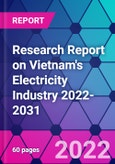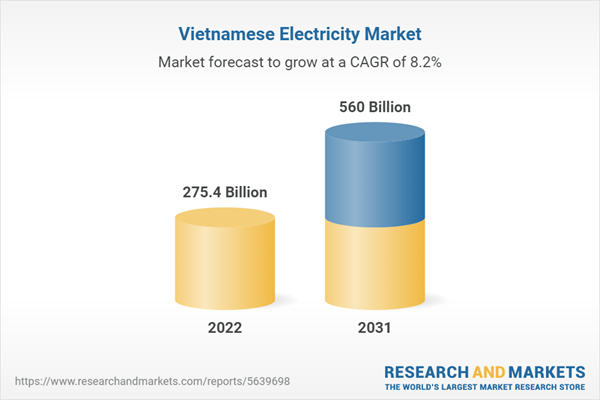Vietnam has average strength on the power generation side, but is growing rapidly. According to IEV's March 2021 report, the total installed capacity of Vietnam's power system will be about 56 GW by 2020. Vietnam's power mix has the largest share of coal-fired power and hydropower at 34% and 30% respectively, gas turbine and oil-fired thermoelectric power at 15%, solar (including rooftop solar) at 24%, wind power at 1%, biomass power at about 1%, and hydropower imported from Laos at 1%. The total number of operating power plants in Vietnam is about 162 (excluding small hydropower plants and renewable energy). the maximum load capacity of the power system in 2020 is about 38.7 GW, and the crude reserve ratio of the power system (excluding wind and solar) is 34.3%. According to the Vietnamese government, the installed capacity is expected to reach 125-130 GW by 2030, doubling the installed capacity within 10 years. Vietnam's power generation CAGR is expected to reach 5.7% from 2021 to 2030.
Retail electricity tariffs in Vietnam are approved by the government's Prime Minister and have a uniform tariff policy throughout the country, with tariff levels that are low compared to other countries in the region. The higher electricity tariffs for industrial, commercial and foreign consumers subsidize the electricity bills of urban and rural residents.
To attract more private sector investment in IPP projects, the Ministry of Industry and Trade and EVN (Vietnam Electricity) are pushing the government to gradually deregulate electricity prices, according to the analysis. Under current regulations, EVN can raise or lower electricity prices every six months without government approval, within a 10 percent range whenever the cost of power generation (fuel prices, foreign exchange rates, changes in generation mix, etc.) rises by 3 percent, and government approval is required for price changes above 10 percent. The current average price of electricity in Vietnam is VND1,533-2,580 (6.3 to 10.75 cents) per kWh, depending on usage.
According to this analysis, Vietnam has experienced rapid economic development in recent years, with high potential for future economic growth. Since early 2022, Vietnam has gradually gotten rid of the adverse effects of COVID-19, which is conducive to further inflow of foreign capital and will drive electricity demand to maintain high growth. It is expected that in the next few years, Vietnam will gradually reduce the proportion of thermal power generation while Vietnam will work to accelerate the development of renewable energy (hydropower, wind, solar, biomass, etc.).
The analyst recommends that investors actively explore the possibility of investing in wind and solar power as well as developing pumped storage hydropower plants. On the other hand, they can continue to install clean and efficient thermal power plants in some regions, and prioritize the development of pithead coal power using clean coal power technology in the power shortage and coal-producing areas of northwest Vietnam.
Topics covered:
- Overview of Vietnam's power sector
- The economic and policy environment of Vietnam's power sector
- What is the impact of COVID-19 on the power sector in Vietnam?
- Vietnam Electricity Industry Market Size 2017-2021
- Vietnam Electricity Industry Market Forecast 2022-2031
- Vietnam Electricity Import and Export Analysis
- Analysis of major power companies in Vietnam
- Key Drivers and Market Opportunities in Vietnam's Power Sector
- What are the key drivers, challenges and opportunities for Vietnam's power sector during the forecast period 2022-2031?
- What is the expected revenue of Vietnam's power sector over the forecast period 2022-2031?
- Which segment of the Vietnam power industry market is expected to dominate the market in 2031?
- What are the main negative factors facing the power sector in Vietnam?
Table of Contents
Companies Mentioned
- Quang Ninh Thermal Power JSC (QTP)
- Pha Lai Thermal Power JSC
- Tkv Campha Thermal (NCP)
- Ninh Binh Thermal Power JSC
- Hai Phong Thermal Power SJC
- Central Hydropower Joint Stock Company
- An Giang Power And Water Supply Joint Stock Company
- Dai Truong Thanh Holdings Energy Investment Joint Stock Company
- Tra Vinh Rural Electric Development Joint Stock Corporation
- EVN International Joint Stock Company
Methodology
Background research defines the range of products and industries, which proposes the key points of the research. Proper classification will help clients understand the industry and products in the report.
Secondhand material research is a necessary way to push the project into fast progress. The analyst always chooses the data source carefully. Most secondhand data they quote is sourced from an authority in a specific industry or public data source from governments, industrial associations, etc. For some new or niche fields, they also "double-check" data sources and logics before they show them to clients.
Primary research is the key to solve questions, which largely influence the research outputs. The analyst may use methods like mathematics, logical reasoning, scenario thinking, to confirm key data and make the data credible.
The data model is an important analysis method. Calculating through data models with different factors weights can guarantee the outputs objective.
The analyst optimizes the following methods and steps in executing research projects and also forms many special information gathering and processing methods.
1. Analyze the life cycle of the industry to understand the development phase and space.
2. Grasp the key indexes evaluating the market to position clients in the market and formulate development plans
3. Economic, political, social and cultural factors
4. Competitors like a mirror that reflects the overall market and also market differences.
5. Inside and outside the industry, upstream and downstream of the industry chain, show inner competitions
6. Proper estimation of the future is good guidance for strategic planning.

LOADING...
Table Information
| Report Attribute | Details |
|---|---|
| No. of Pages | 60 |
| Published | July 2022 |
| Forecast Period | 2022 - 2031 |
| Estimated Market Value in 2022 | 275.4 Billion |
| Forecasted Market Value by 2031 | 560 Billion |
| Compound Annual Growth Rate | 8.2% |
| Regions Covered | Vietnam |
| No. of Companies Mentioned | 10 |









